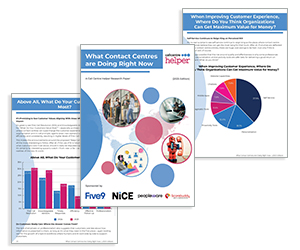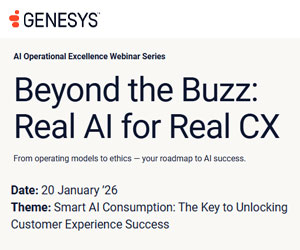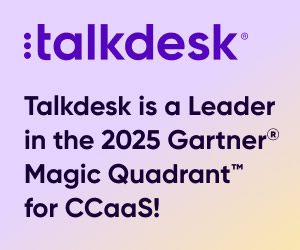The rise of digital channels has transformed how customers engage with contact centres, and with that shift comes new complexity for workforce managers.
Unlike voice calls, digital interactions are often asynchronous, unpredictable, and handled in multiples.
Traditional scheduling models are no longer enough, and to stay efficient, contact centres must rethink how they forecast and allocate staff.
To find out more, we asked Andrea Matsuda, Manager, Product Marketing at NiCE, to take a look at the tips, tools and techniques contact centres can use for scheduling and explain how you need to take digital interactions’ unique needs into account.
Video: Take Digital Interactions’ Unique Needs Into Account
Watch the video below to hear Andrea explain how you need to take digital interactions’ unique needs into account when scheduling:
With thanks to Andrea Matsuda, Manager, Product Marketing at NiCE, for contributing to this video.
This video was originally published in our article ‘Is Your Scheduling in Need of an Overhaul? Try These 8 Top Tips’
Understanding the Digital Difference
Digital interactions, such as live chat, email, or social messaging, behave very differently from voice calls, as Andrea explains:
“With the advent of digital, it has become more difficult than ever for workforce managers to schedule, and staff, effectively.
Digital interactions are very different from voice interactions – they can start and stop intermittently, and employees can manage multiple digital interactions simultaneously.”
They don’t follow a fixed start-and-end pattern and can stretch over long periods, even days.
Agents can also manage several digital interactions at once, which adds another layer of complexity to staffing decisions.
Why Traditional Scheduling Falls Short
Most legacy workforce management systems were designed around voice interactions.
As a result, they struggle to accurately forecast and schedule for digital workloads, often leading to under- or overstaffing – both of which impact customer experience and agent wellbeing.
How Advanced Analytics and AI Help
Modern workforce managers are using AI and advanced analytics to better handle the demands of digital interactions, as Andrea continues:
“Managers are overcoming the scheduling complexity with advanced analytics and AI. Now workforce managers can take digital interactions into account, and schedule and forecast around their unique needs.
Managers can increase forecast accuracy by calculating the exact actual time invested in handling a digital interaction, based on when the activity actually occurred.”
These tools allow managers to track the actual time invested in each digital task – not just when it started, but when the work actually occurred.
This level of detail provides more accurate insight for forecasting and scheduling.
Planning for Asynchronous Work
A key advantage of today’s AI-powered tools is their ability to plan for asynchronous digital activity.
“Additionally, it is now possible to plan for asynchronous interactions. This is necessary as digital interactions can span multiple intervals, or even days.
By being able to take digital interactions into account, organizations can bring their workforce engagement management into the digital age, and be more efficient than ever.”
Because digital conversations often span multiple time intervals, managers can now schedule around these breaks in interaction without losing sight of the total effort involved.
If you are looking for more great insights from the experts, check out these next:
- 7 Quick Wins to Boost CSAT Scores
- 5 Strategies to Maximize the Value of Your CCaaS Solution
- Two Strategies to Improve First Contact Resolution (FCR)
- Why You Shouldn’t Make Assumptions About Unsociable Hours
Author: Robyn Coppell
Reviewed by: Xander Freeman
Published On: 29th Aug 2025 - Last modified: 25th Sep 2025
Read more about - Video, Andrea Matsuda, Digital Channels, NiCE, NiCE CXone, Omnichannel, Scheduling, Videos







































